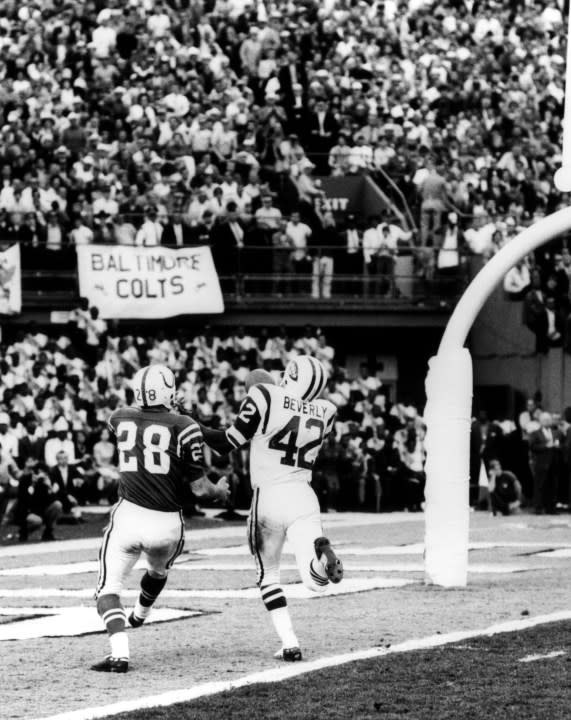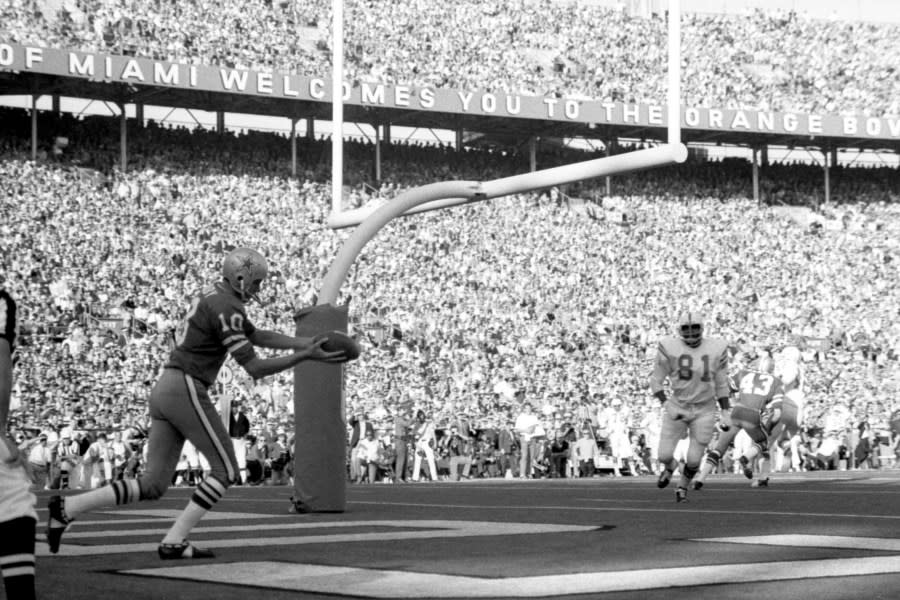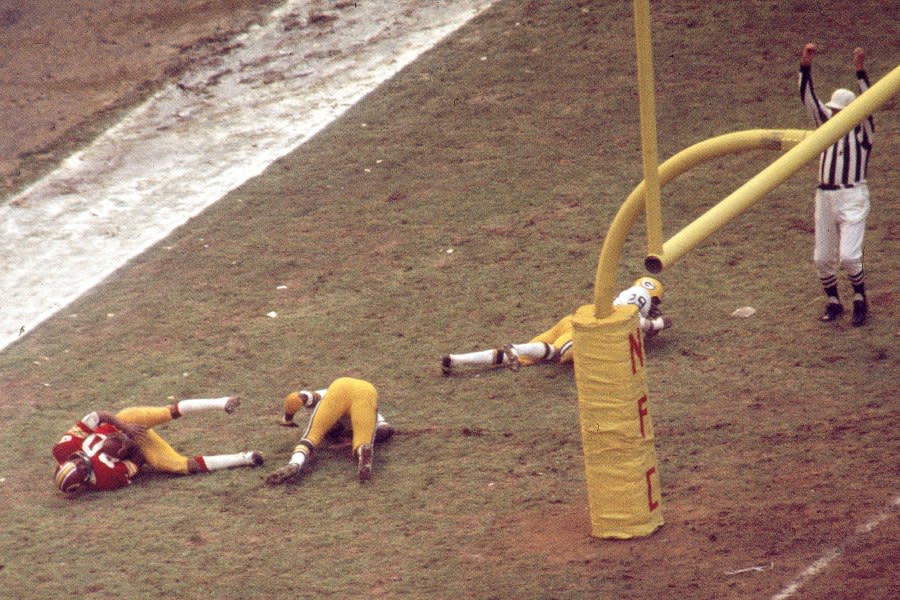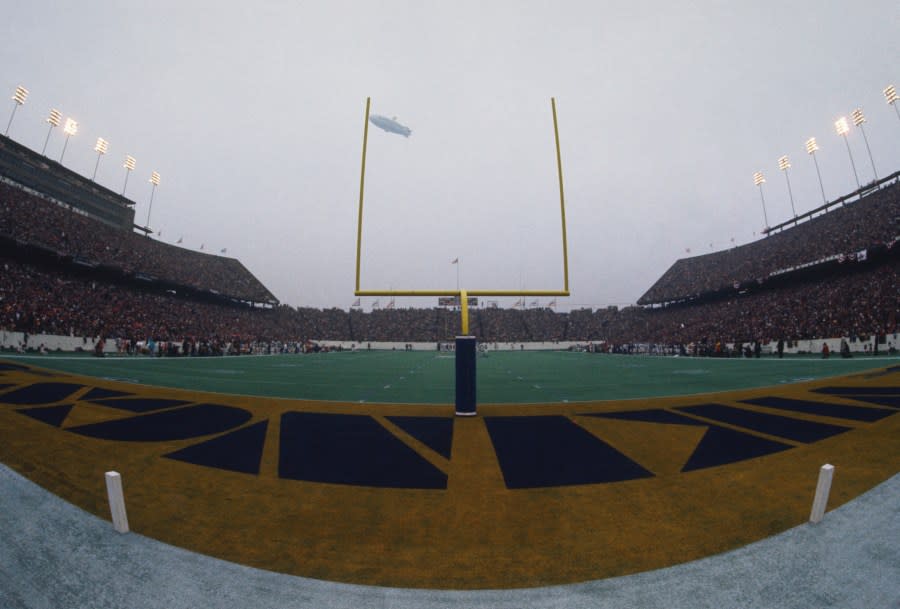Why the NFL goal posts aren’t where they used to be

(NEXSTAR) — Whether you’re an avid NFL watcher, or this is your rookie viewing season, there’s a piece of the field you’re probably pretty comfortable with: the goal posts.
They’re bright yellow and found on both ends of the field. Kicking the ball through the goal posts will result in either an extra point or three, and missing the 18-foot-6-inch opening will cause gasps or cheers, depending on which team you’re cheering for.
But, like many things in the NFL, the goal posts have evolved over time.
Some NFL players are wearing collars on their necks. Why aren’t they all?
Initially, the placement and design of NFL goal posts in the late 1890s was inspired by rugby, according to the Pro Football Hall of Fame. They appeared as an H-shape, and were located on the goal line. You can see a modern rugby field in the photo on the left below, and a shot of a football field (albeit, a collegiate field) in 1912 on the right. You can see in both that goal posts are located on the line before the end zone (or try zone, in rugby).
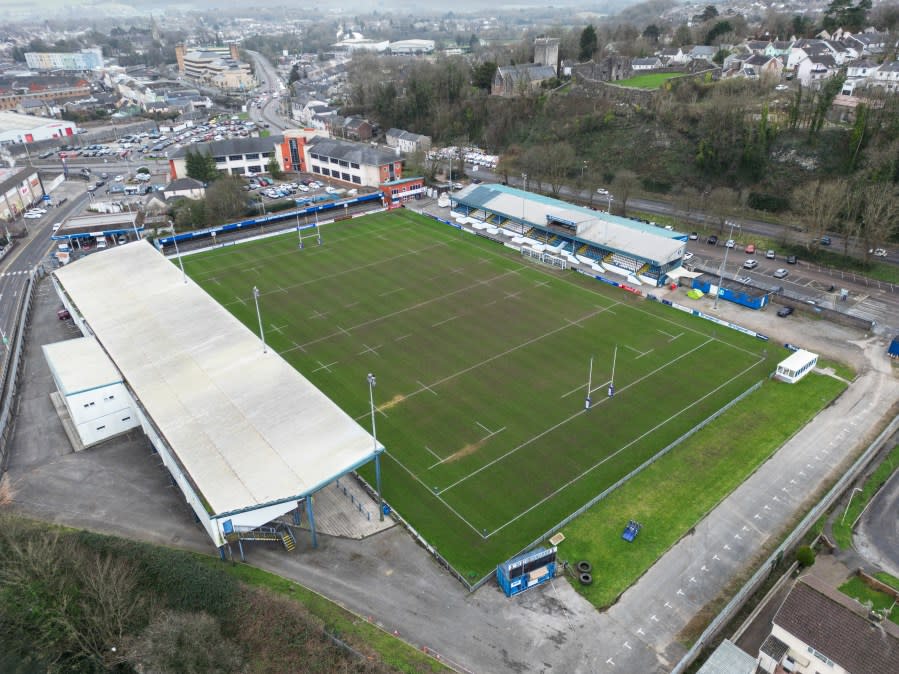
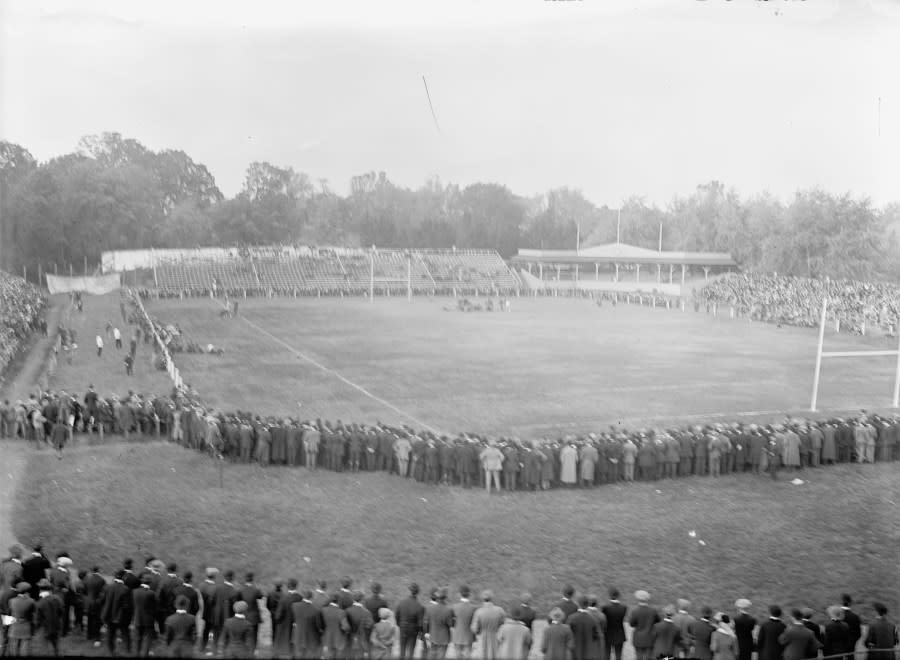
In the late 1920s, the NFL pushed its goal posts to the end line, the back line of the end zone, like we see today. This was in accordance with NCAA rules, which the NFL was following at the time, the Pro Football Hall of Fame explains.
That led to fewer field goals and more tied games, though, according to the league. When the NFL wrote its own rules in 1933, they decided to move the posts forward again to the goal line. That, of course, caused more field goals and fewer tie games.
Why does the Super Bowl use Roman numerals?
You can see those moved-up field goals in the photos below: on the left, a photo from the 1956 championship game between the New York Giants and Chicago Bears at Yankee Stadium, and on the right, a 1958 matchup between the San Francisco 49ers and the Los Angeles Rams.
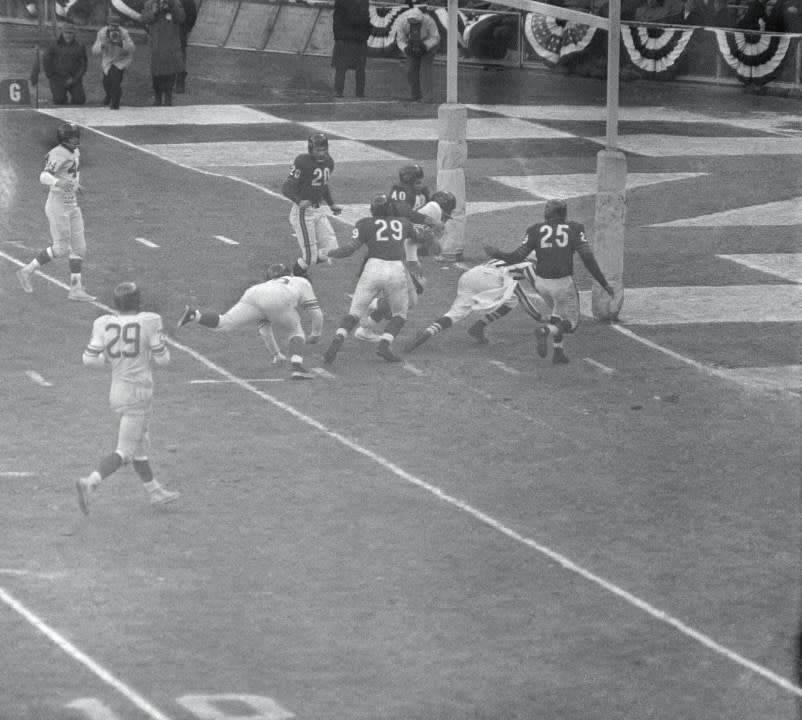
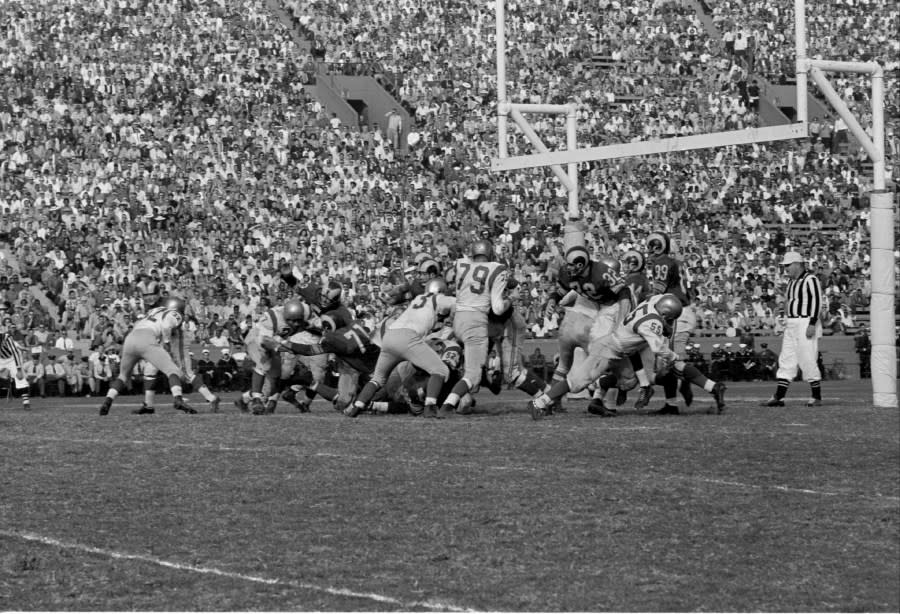
NFL goal posts would stand tall on the goal line for over three decades, according to the Pro Football Hall of Fame. Then, in 1966, the rule changed again.
This time, the goal posts had to be offset from the goal line. Though you can’t tell in the pictures from Super Bowl I below, the rules also mandated the posts be bright gold.
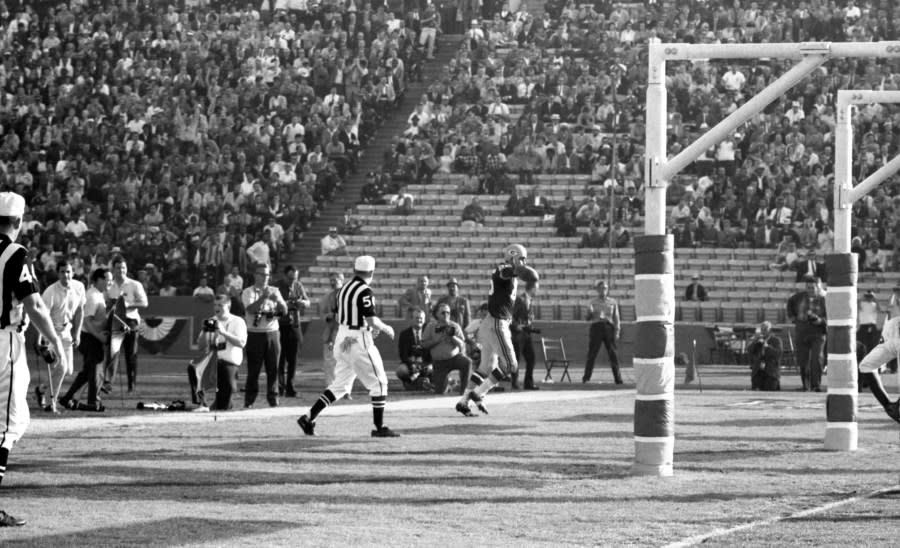
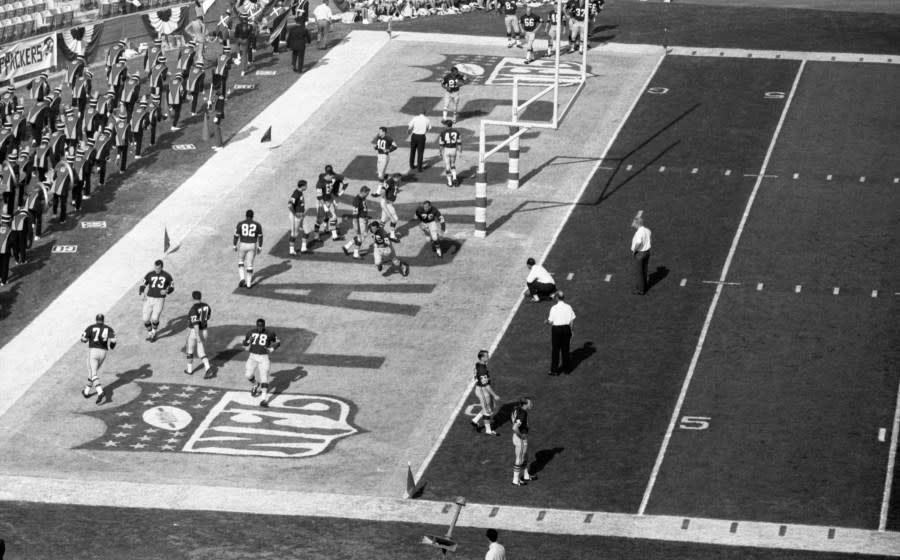
At first, the goal posts were still the H-shape they started as at the turn of the century. But ahead of the 1967 season, the NFL required the goal posts to have a “sling-shot” shape, looking more like the posts we see today.
You can see some examples of those offset, “sling-shot” goal posts in the slideshow below.
New York Jets corner back Randy Beverly(42) intercepts a pass intended for Baltimore Colts wide receiver Jimmy Orr in the endzone resulting in a touchback in a 16-7 win over Baltimore Colts in Super Bowl III on January 12, 1969 at Orange Bowl. (Photo by Fred Roe/Getty Images) MIAMI, FL – JANUARY 17, 1971: Punter Ron Widby #10 of the Dallas Cowboys punts out of his own endzone during Super Bowl V against the Baltimore Colts on January 17, 1971 at the Orange Bowl in Miami, Florida. The Colts beat the Cowboys, 16-13 to win the professional football World Championship.19710117-FR-1971 Kidwiler Collection/Diamond Images WASHINGTON, D.C. – DECEMBER 24: Wide receiver Roy Jefferson #80 of the Washington Redskins lies in the endzone after catching a scoring pass against the Green Bay Packers at RFK Stadium in the 1972 NFC Divisional Playoff Game on December 24, 1972 in Washington, D.C. The Redskins defeated the Packers 16-3. (Photo by Nate Fine/Getty Images) HOUSTON – JANUARY 13: A wide angle shot shows Rice Stadium during Super Bowl VIII featuring the Miami Dolphins and the Minnesota Vikings on January 13, 1974 in Houston, Texas. The Dolphins defeated the Vikings 24-7. (Photo by Focus on Sport via Getty Images)
Players and announcers at the time noted that the goal posts on or close to the goal line could be used “as an extra blocker” on running and crossing patterns in the endzone, Sports Illustrated reports.
It wasn’t until 1974 that the goal posts would go to the end line in an effort to force offenses to play for touchdowns instead of field goals. At the time of the move, the Hall of Fame reports field goals had been increasingly sought after. In the season before the posts moved backward, more than 860 field goals were attempted. That dropped to 553 in the next season.
Moving the posts also opened up the end zone for more pass plays, Hall of Fame coach Paul Brown told SI.
Photos: 4 things from Super Bowl I you likely won’t see this year
The goal posts have remained on the end line ever since. The current NFL rulebook mandates that the goal posts have a crossbar 10 feet above the ground that stretches 18 feet and 6 inches across. The uprights, or bars on either side, extend 35 feet vertically and have to be between three and four inches in diameter. The goal posts must also be padded “in a manner prescribed by the League.”
It doesn’t appear the current goal post locations are deterring field goal attempts though. NFL statistics show more than 1,000 field goals were attempted this season. More than 900 were successful.
For the latest news, weather, sports, and streaming video, head to KLAS.
